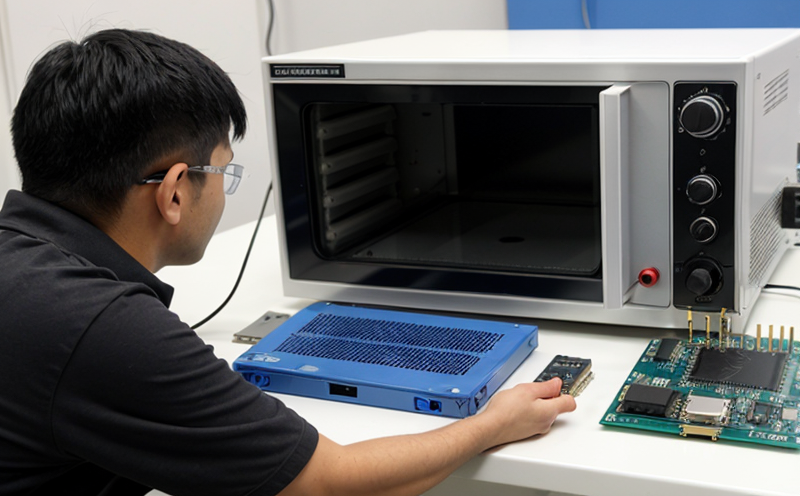ANSI ESD S20 20 Electrostatic Discharge Protection Testing
The ANSI/ESDA/JEDEC Standard ESD S20.20 provides a robust framework for electrostatic discharge (ESD) protection testing, which is essential in the electronics industry to ensure product reliability and quality.
Electrostatic Discharge (ESD) can cause significant damage to electronic components during manufacturing processes or in use if not properly managed. The ANSI ESD S20 20 standard outlines various tests designed to evaluate an electrostatic discharge protection system's effectiveness before it is used in a product.
Typically, this involves placing the component under test (CUT) in a controlled environment where specific types of ESD events are simulated. The CUT can be a single semiconductor chip or even a complete printed circuit board assembly. The standard specifies various levels and waveforms for discharges to simulate real-world conditions accurately.
The tests include both contact and air-gap ESD testing, which are designed to replicate the two primary mechanisms by which static electricity is transferred in electronic assemblies: direct contact with an electrostatically charged surface (contact discharge) or transfer through the air between charged objects (air-gap discharge).
For a product to pass these tests successfully, it must demonstrate its ability to withstand specified levels of ESD without failure. This includes both functional integrity and physical integrity checks after exposure.
The standard also provides guidelines on how to prepare specimens for testing according to their intended use in the field. Proper specimen preparation is crucial because improper handling could lead to erroneous results, thus invalidating the test outcomes.
In addition to specifying the exact procedures and criteria for performing these tests, ANSI ESD S20 20 also sets forth detailed requirements regarding equipment calibration, environmental controls, safety measures, and documentation of all test parameters and conditions. Compliance with this standard ensures that products meet stringent quality control standards before being released into commercial applications.
Testing according to ANSI/ESDA/JEDEC Standard ESD S20.20 not only contributes significantly towards ensuring the reliability but also plays a key role in enhancing consumer safety by preventing potential hazards associated with improper operation due to ESD-induced failures.
- Reduces Risk of Failure: Ensures that electronic components and assemblies are protected from damage caused by electrostatic discharges.
- Enhances Product Reliability: By identifying weak points early in the design phase, manufacturers can improve overall product performance.
- Promotes Consumer Safety: Prevents accidents or malfunctions that could result from ESD-induced failures.
Eurolab Advantages
At Eurolab, our commitment to providing top-notch services is reflected in every aspect of our work. Our team comprises highly skilled professionals who bring extensive experience and expertise to bear on each project.
We offer comprehensive testing solutions tailored specifically to meet the needs of our clients across various industries, including electronics manufacturing. With state-of-the-art facilities equipped with cutting-edge technology, we ensure accurate results every time.
Our services encompass not only ANSI ESD S20 20 but also other relevant standards such as IEC, ISO, ASTM, and EN specifications. This versatility allows us to cater effectively to diverse requirements while maintaining consistent high standards of accuracy and precision.
Moreover, Eurolab prides itself on delivering timely service with minimal turnaround times so that clients can get their results quickly without compromising quality. Our dedication extends beyond technical capabilities; we strive to foster long-term partnerships based on trust and mutual respect.
International Acceptance and Recognition
The ANSI/ESDA/JEDEC Standard ESD S20.20 has gained widespread recognition worldwide due to its comprehensive approach towards ensuring electrostatic discharge protection within electronic components and assemblies.
This standard is widely accepted by industry leaders, regulatory bodies, and organizations globally who recognize the importance of protecting against potential risks posed by static electricity during manufacturing processes or while in use. Its adoption reflects a collective effort aimed at enhancing product reliability and consumer safety across various sectors.
Many countries have incorporated parts or all aspects of this standard into national regulations, further emphasizing its significance within international standards frameworks.





